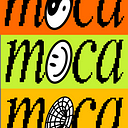The shortening of attention spans (despite being value-neutral) is a much fretted-over symptom of the digital age. Handwringing over a perceived lack of deep reflection is missing the point; the abundance of material at hand and the ease of access to media and content allows for unparalleled intellectual freedom and presents an entire world of opportunity to the enterprising autodidact. To look at the wealth of accessible information provided by the internet and digital platforms and call it generational intellectual malnourishment is to be an uncreative crank.
Art will conform to this explosion of information as it will simultaneously critique it, and it will not be any better or worse as a result. T.S. Eliot, a century ago: “art never improves, but…the material of art is never quite the same.” In short, the shifting landscape is nothing to rue — things change, art adapts. Creativity and artistic inspiration will naturally take whatever shape contemporaneity dictates, as it always has.
The creative process and the exhibition of its yield are amalgamated to an unprecedented degree by the internet (and will be only further integrated via the blockchain). The creation of digital art occurs via the same platform it is experienced on; this shift in the visual arts carries with it repercussions that are increasingly reflected in the art itself.
The contemporary art scene has largely failed to fully incorporate or reflect upon the changes wrought by this technological revolution. This represents an opportunity for the crypto art scene to confront the meaning and implications of era-defining changes in a way that is both vital and artistically rewarding. The arc of contemporary art has seen a progression towards an understanding and embrace of its essential nature: the spark of creativity conveyed to the viewer as an experience.
Immaterial and accessible, digital art is interestingly juxtaposed with the ascendancy of experiential approaches to contemporary visual arts. How does an artist reckon with the simultaneous isolation of the viewing experience (one viewer on one screen) and the universality and interconnectivity of the internet?
Any given piece is an attempt to convey a moment of inspiration to the viewer, whose experience of the piece is varied and of supreme importance. This distillation of the creative process and of artistic experience is a liberation of sorts; a rejection of superfluity and rigidity.
With art so untethered to conventional concepts of physicality, the relationship between physical and digital spaces is thematically relevant in and of itself. The digitization of human experience and interaction creates a need for spaces within the metaverse that exist to facilitate the growth of artistic communities, open access to digital art, and artistic discourse.
This confluence of the digital and the physical is perhaps the primary technological narrative of the modern experience; this is an ongoing revolution with universal obligatory participation.
Digital art finds itself at the culmination of a broad process of excision of barriers in the visual arts. As these impediments erode, the essential artistic experience achieves absolute supremacy — although the experience of art will naturally remain tethered to the medium and the method of presentation of a given work.
Traditional art is increasingly inaccessible to the public at large. At best, it is observable in a public museum; physical pieces are increasingly kept as mere investment vehicles and never see the light of day. This represents the inverse of M○C△’s aims: whereas M○C△ seeks to provide a symbiotic and sustainable relationship between artists, collectors, and viewers, the traditional art landscape becomes increasingly hidden, stifled, and enshrouded.
Crypto art by its nature has layers of anonymity and transparency: the blockchain can maintain the anonymity of both the collector and the artist (should they choose it) as well as absolute transparency in transactions themselves. The traditional art world is in many ways the inverse of this, as private collections and collectors are able to keep hidden their “investments.” The inherent interconnectedness of the NFT market then stands in direct contrast to the shadowy nature of traditional art collection.
Digital art represents a dramatic alteration of the viewers’ experience, untying the act of viewing art from physical locations and shifting observation and interaction to the metaverse — a rejection of historical trends away from public display and towards private collections.
Digital art straddles physical and digital spaces (or ought to, anyways): consider the possibilities, the enormous potential, the expansive creative freedom to be found in the interplay between digital art and physical spaces as the two become increasingly interwoven. The atemporality of the work itself is offset by the versatility of methods of exhibition. This is to say: criticism of digital art as unreal or ephemeral is blind to the world of opportunity for creative exhibition and widespread access.
As digital art alters the nature of the viewer experience it is also partially defined by the nature of digital interaction; the pace at which one absorbs and encounters digital content is naturally and exponentially more rapid than that of previous artistic endeavors. Digital experiences occur rapidly and in quick succession; art is no different from other media and the effects of this shift are already apparent. The “fast scanning” of art as opposed to deep reading may appear at first glance to be a negative development; a proper perspective frames this as an extension of the same shifts brought on by the development of film as an artistic medium over the past two centuries.
There seems to be space for increased exploration and development of digital art as experiential — the perceived problems with application and exhibition of NFT art is merely a guidepost, a directive, reflective of the tremendous potential for growth in this space. This is an opening for an enterprise such as M○C△ that seeks to create experiences and interaction with this nascent medium and its attendant community.
Thoughts? Ideas? Find us here: https://forum.museumofcryptoart.com/
